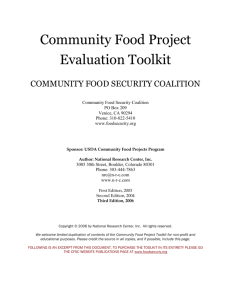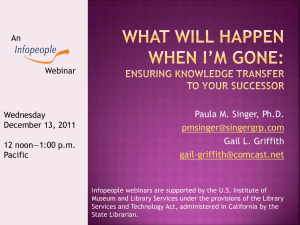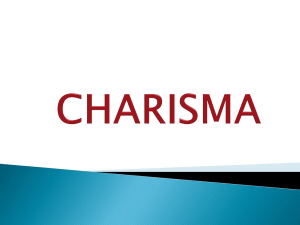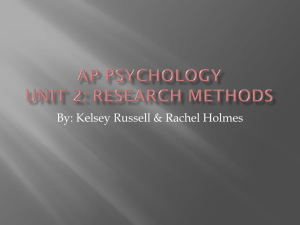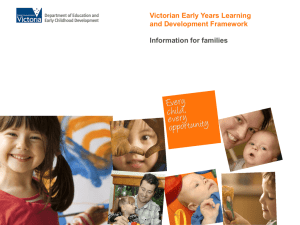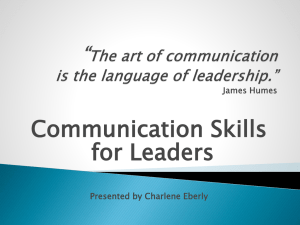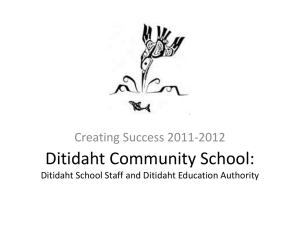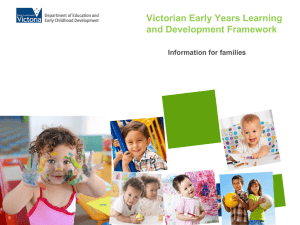27-30 Month Child Health Review
advertisement
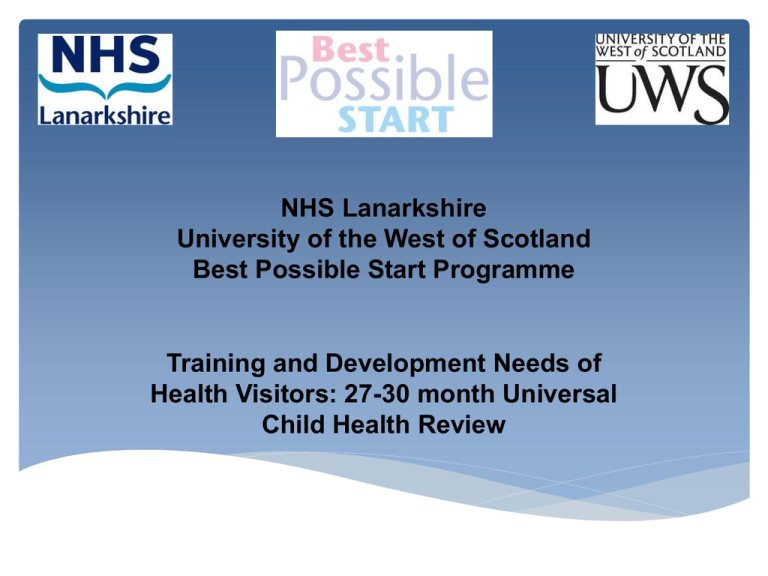
NHS Lanarkshire University of the West of Scotland Best Possible Start Programme Training and Development Needs of Health Visitors: 27-30 month Universal Child Health Review Best Possible Start Programme A joint collaborative programme between NHS Lanarkshire and the University of the West of Scotland to implement a suite of national policy documents aimed at improving maternal, infant and child health outcomes in the early years to ensure Lanarkshire’s children have the best start in life. Programme Context Policy Context Overall aim: Strengthen ‘Health for all Children (2005)’ to ensure the best quality care and support is delivered to children and families in the vital early years Key aspect: Reintroduction of the 27-30 month child health review NHS Lanarkshire Response National Guidance issued to NHS Boards– December 2012 Promotion of strong early child development Promotion of child healthy weight GIRFEC framework Short-Life Working Group established Chair : Harpreet Kohli, Director of Public Health, NHSL Preparatory Training and Development Needs BPS Research and Evaluation Group Expert Practitioners Mixed methods approach Ethics Approval Recruitment : Purposive sampling method Data Collection On line survey questionnaire to all HV’s Based on a range of core competencies of 27-30 month review (trends and not precision). Reminder web link Focus Groups Semi structured interview schedule (more probing and clarity) Competence measured by rating staff level of confidence 1-4 scale Criteria for rating perceived level of competency Rating Very confident Indication for training Respondents currently have specialist knowledge / skills / experience of the issue / topic area described and that they can and do act as a mentor, advisor or consultant to others. Confident Respondents currently have considerable knowledge / skills / experience of the issue / topic area described. Fairly confident Respondents have some knowledge / skills / experience but do require further training (revision) to refresh and meet their needs in that particular issue / topic area. Not confident Respondents do require further training (more indepth) to meet their needs in that particular issue / topic area. Response Rate On Line Survey Questionnaire to all HV’s Response rate 61% (n=109 of 180) Focus Groups 5 groups with 38 participants. Thematic analysis of focus group transcripts/field notes Data Analysis Categorisation: Priority Training and Development Needs Refresher Training and Development No Training and Development Needs Developmental toolkit Home Observation for Measurement of the… Eyberg Child Behaviour Inventory (ECBI) Strengths and Difficulties Questionnaire (SDQ) Sure Start Language Measure (SSLM) Modified Checklist for Autism in Toddlers… Ages and Stages Questionnaire 3 - Social… Schedule of Growing Skills 11 (SOG S11) Ages and Stages Questionnaire 3 (ASQ 3) Parents Evaluation of Developmental… Parents Evaluation of Developmental Status… 0 Very Confident Confident 20 40 Fairly Confident 60 80 Not Confident 100 120 Assessment of Normal Child Development Physical activity and play Dental and oral health Hearing Vision Immunisation status Nutritional status Behavioural issues Cognitive development Emotional development Personal and social development Language development (Speech… Physical development 0 Very Confident Confident 20 40 Fairly Confident 60 80 100 Not Confident 120 Staff Comment Asset Based Approach Use promotional interview skills to affect behavioural change Provide parenthood education using a strength / asset based approach 0 Very Confident Confident 20 40 Fairly Confident 60 80 100 Not Confident 120 Staff Comment Summary Top 3 Development Needs Identified Priority Areas for Training and Development Priority Areas Child development Vision Hearing Assessment of children with long term conditions Tools for assessing child development Strength/asset based approaches E.g. Autism and physical disabilities Documentation, shared terminology, professional roles and Request for Assistance Pathways should be embedded in all forms of training Refresher Areas for Training and Development Revision Sessions Childhood development Emotional Dealing with challenging situations Childhood obesity management Optimal child nutritional advice Dealing with difficult families Cognitive Social Speech, language Documentation, shared terminology and Request for Assistance Pathways should be embedded in all forms of training Areas not Requiring Training or Development No Training Required Person centred approach Health promotion issues Building parent's capacity for positive parenting Having difficult conversations with parents Referrals and multiagency working Vulnerable families and those with specific issues Learning Preferences Attendance on training courses. Mentoring. Not Effective On the job training. Effective Very Effective Job shadowing. E- Learning. 0 20 40 60 80 100 120 Tiered Training and Development Approach Large Group awareness raising SCPHN- HV’s: Introduction to the Review/Process/Toolkit Master class SGSII : Training the Trainer approach (GL Assessment) Locality/Team Practice Development roll out programme Learning Points Policy context focusing attention on early years and pivotal role of health visitors in Scotland to achieve outcomes for children and families Policy into Practice approach essential for success HV’s supported and clear in identifying training and development needs Informed Strategic Plan for in service training Continuous Improvement journey Follow up study to monitor impact Further Information Jean Rankin, Senior Lecturer in Research, University West Scotland Sandra MacInnes, Programme Manager (Best Possible Start) Rankin J, MacInnes S (2014) Training and Development Needs of Health Visitors : 27-30 month child health review, Journal of Health Visiting, Volume 2, Issue 8 Service Provision

